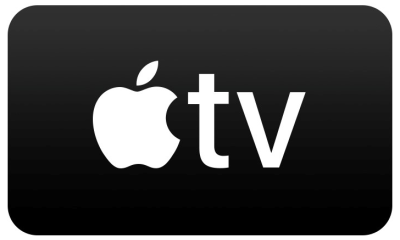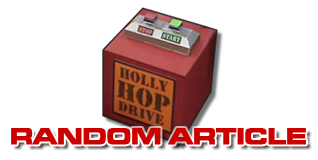 |
Holy Holography Hologram expert Dr Sean Johnston talks about technology and sci-fi - using lots of long words Mr Flibble doesn't understand... |

Andrew Ellard
Mr Flibble asked what exactly Dr Johnston is currently RESEARCHING, and Andrew dutifully passed the question on.
I'm researching the history of holography - that is, the technology of creating holograms, and the people who made them. The subject actually has been around for quite a while. Holography was invented in England in 1947 as a way of improving the images from electron microscopes. But in the early 1960s, when lasers were invented, holography really took off. The three-dimensional images from holograms seemed incredibly realistic and yet magical, even to the scientists who created them. They also seemed full of potential. Military and commercial funding skyrocketed.

What angle are you coming at the subject from? Is it technological, or were you a sci-fi fan already?
The technology, and my background, are both relevant to this. I read science fiction from the age of 10, starting with Ray Bradbury and Isaac Asimov, which helped encourage me towards my original occupation as a physicist. But my present research is part of what is nowadays called 'science studies' - the history, sociology and philosophy of science and technology. I moved to science studies because it tackled wider and more interesting questions about culture and how we create new knowledge. This project isn't just technological - it also concerns how artists, entrepreneurs, enthusiasts and writers have picked up holography and tried to make it their own.
So when do HOLOGRAMS start showing up in science fiction? And how does that relate to where the technology was in the real world?
The first holograms in SF seem to be simple extrapolations of the contemporary state-of-the-art. In the early 1970s scientists and engineers were making optimistic predictions. The SF versions were usually imagined to be some form of optical projection, often scaled-down to show people in a format rather like walk-around 3D television. A good early example is the hologram projector in the original Star Wars movie.
SF is obviously known for playing on the zeitgeist - which uses of holograms do you think have really come out of that?
That Star Wars example is a good one: it envisages the hologram to be more or less as scientists of the 1970s imagined it would be 10 years hence. It was 'viewed' very much as the newest cylindrical holograms of the mid-1970s were, and imagined as a glorified television image. But more recent SF portrayals stray far from that idea.
Mr Flibble's exact response - 'Huh?' - was not passed on to the doctor. Andrew, fearing Mr Flibble would not understand much of this conversation, handed the penguin some crayons and paper to play with. He then asked Dr Johnston to chart the HISTORY of the hologram in sci-fi...
After Star Wars (written from 1973, and released 1977) the best-known on-screen holograms are the 'holodeck' in Star Trek: The Next Generation (from 1987), Red Dwarf's Rimmer (pilot written 1983, broadcast from 1988), Deep Space Nine (from 1993) with 'holosuites', and Star Trek: Voyager's 'Emergency Medical Hologram' (from 1995). All of these are very different from real-world predictions.

Computer-generated holograms have been forecast since the 1960s, but demand extensive calculations and are still extremely crude. The notion of animated images viewable from any angle within a room is, of course, still pure fiction. And the essential contradiction of an optical illusion that can touch or be touched is part of its appeal as a device in science fiction. Holograms also seem to have become popular in the last decade of comics, such as [in some] Batman stories. I'm hoping that your readers can identify other examples!
What do you see as Red Dwarf's major influences? And what areas do you think it has itself influenced?
I'm intrigued by the chronology of Red Dwarf's holograms. They were more or less contemporaneous with Star Trek: The Next Generation, which has rather similar computer-generated holographic environments (the Holodeck), but preceded Star Trek: Voyager, with its Emergency Medical Hologram (EMH), who is rather like Rimmer. None of these ideas is a very obvious extrapolation of real-world research, so I suspect that there has been a cross-fertilisation, presumably from Red Dwarf towards Star Trek. The idea of a 'light bee' buzzing around to project the image is rather like that taken up later in Voyager to explain how the EMH in Voyager can leave his normal environment.
Mr Flibble muttered something about how 'contemporaneous' was clearly a made-up word. Andrew told him to go back to his crayons. He then asked the Doctor to predict the PREDICTIONS - what uses do you think we'll see for holograms in SF in the coming years?
Predicting the predictions is fascinating stuff - it's the theme of a third-year university course I teach with Dr Luc Racaut at the University of Glasgow Crichton Campus, called Imagined Futures. There have been large-scale cycles of prediction through the decades: science fiction during the Fifties frequently cast the future as an extension of McCarthyite
Cold-War America, with ants (Them!) or monsters symbolising the communist menace. The Sixties were more often simplistically optimistic about the future and 'progress' - think of 2001: A Space Odyssey or the technology programme Tomorrow's World, still with us today. SF during the Seventies was more often pessimistic (Soylent Green), and during the Nineties was fatalistic and dismissive of technology (Blade Runner or Twelve Monkeys, for example), forecasting misuse, abuse and breakdowns.
What's notable about holography is how poor the predictions have been! It was a technology born in the 1960s, which meant that it was projected as destined to be a wondrous tool within a decade or two: three-dimensional movies, television and book illustrations, incredible data storage, new art forms.

From today's perspective, what we have actually developed looks rather more mundane: security foils for bank notes and credit cards, or children's sticker books. Most people today think of holograms as kitsch, brightly-coloured but hard-to-see images, because that's where most of the commercially important applications are. So there has been a rupture between real-world predictions and science fiction depictions.
Foolishly stepping out on a limb, I'd suggest that commercial holography will continue to be dominated by security applications (stickers and the like) and to remain important for engineering testing. With sufficiently powerful computers, some limited holographic imaging may find a niche, but frankly there seem to be easier low-tech ways of accomplishing most 3D imagery.
Which SF fiction do you think has proven especially good at predicting what is to come?
Tracking predictions is fun, but it also suggests how difficult it is to be prescient! I'd say that the most effective science fiction probably dates from the period between its origins in the late 19th century and the Second World War. During that time, there was a stronger cultural momentum pushing technology and politics in particular directions, and some writers were able to use science fiction to illustrate or even inspire those imagined futures.
One of the best-selling books in America around 1890 was 'Looking Backward: 2000 to 1887', written by the American Edward Bellamy. He conceived a kind of socialist technological utopia, and one that a number of groups in America and Europe tried to achieve in the decades that followed. H.G. Wells also realised the power of mixing science fiction with political idealism. Some of the zeal in pursuing atomic energy and rocketry can be attributed to that. In today's post-modern world, though, I think it's more difficult for writers to tap into a widespread zeitgeist because there seem to be many competing options for the best version of a technological (or non-technological) future.
Red Dwarf seems to get the tone of the future right. The technologies of the future won't seem amazing or liberating, and they probably won't work properly much of the time. The inventions we use will depend as much on our whims and fashions as on any built-in technical improvement. And the future will be populated with a lot of flakey people pushing the buttons!

Mr Flibble held up his drawing - rather predictably, a picture of some penguins. Andrew asked for five more minutes to let the grown-ups talk. What are some of your favourite SF moments?
I like plot twists - the sort of thing that The Twilight Zone did well. My favourite science fiction is the kind that triggers you re-evaluate your assumptions, that reveals limited thinking. The final scene in the original Planet of the Apes had that. Those aspects are what makes research in Science Studies so fascinating too.
Science fiction is also very effective for revealing new vistas - for that awe-inspiring sense of the technological sublime. The space station on 2001: A Space Odyssey is an example.
Finally, do you have any favourite moments from Red Dwarf?
Red Dwarf is superb precisely because it doesn't take all this too seriously. Science fiction is too often earnest and full of itself. I like the general spirit of the Red Dwarf series, which to me illustrates just how irrelevant technology is to what matters in daily life. Inventions and people often interact in unpredictable ways that defy analysis. Sometimes you just have to relax and enjoy it.
Mr Flibble enjoyed talking to Sean Johnston, and now that it's over... Mr Flibble is very cross.
You can link to the Glasgow University website and find out more about the history of holograms from our Links Section.














